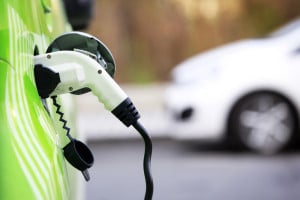Electric-Vehicle Infrastructure: Fertile Ground for P3’s
 In 2006, the documentary “Who Killed the Electric Car?” hit the theaters. Ten years later, there remains substantial disagreement on the answer to that question, but one truth has emerged: the electric car lives again. As Electric-Vehicles (EV) range steadily increases while both charging times and prices continue to fall, it appears inevitable that an EV will someday be in every driveway. Yet one critical obstacle to widespread EV adoption remains. All of those EVs will need to be charged–not only at home, but at work, and on the go. And that requires brand-new infrastructure on a massive scale.
In 2006, the documentary “Who Killed the Electric Car?” hit the theaters. Ten years later, there remains substantial disagreement on the answer to that question, but one truth has emerged: the electric car lives again. As Electric-Vehicles (EV) range steadily increases while both charging times and prices continue to fall, it appears inevitable that an EV will someday be in every driveway. Yet one critical obstacle to widespread EV adoption remains. All of those EVs will need to be charged–not only at home, but at work, and on the go. And that requires brand-new infrastructure on a massive scale.
Public-private partnerships are proven model for delivering new infrastructure in a reduced timeframe and, in many cases, at a reduced cost. Because the public sector will inevitably play a significant role in EV use and EV infrastructure, there are many opportunities–now and on the horizon–for P3s. State and local governments will no doubt be procuring fleets of EV vehicles in the near future, and concessions for rapid charging stations (along with restaurants and other services to keep drivers occupied while their vehicles charge) will be needed along highways throughout the country. Although governments are beginning to plan for these procurements and facilities, Florida’s P3 statute permits interested private-sector partners to jump start the process by submitting an unsolicited P3 proposal.
At the federal level, the Obama Administration has just released a framework for fostering the adoption of electric vehicles, called “Guiding Principles to Promote Electric Vehicles and Charging Infrastructure.” Although the details have yet to be worked out, the framework contemplates P3s and innovative methods of procurement for federal, state, and local governments. Although federal funding and federal assistance will be a valuable asset (the results achieved through the Canadian federal government’s aid to provincial and local P3 procurements provide a vivid example of what can be accomplished), in many cases, the right P3 structure and procurement approach, along with the right private partner, will permit state and local governments to move forward with EV adoption and infrastructure right now.

